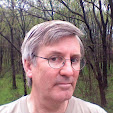 Looking back to my arrival in Belgium a few weeks ago I am happy to report that bicycling and stencil-printing are alive and well. I am on a study tour to see prints in coming weeks, especially those made during the First World War.
Looking back to my arrival in Belgium a few weeks ago I am happy to report that bicycling and stencil-printing are alive and well. I am on a study tour to see prints in coming weeks, especially those made during the First World War. My first few days in Antwerp I looked at many etchings by the Belgian printmaker Walter Vaes, whose career might have been a tedious recital of well-established and somewhat derivative subjects were it not for a series of hallucinatory subjects that crept onto his small etching plates during his years as an expatriate in Holland during the First World War.

A trip to Ieper led to a nice encounter with colleagues at the Flanders Field Museum. I had gone to ask if they had any information about Henry de Groux’s unusual series of etchings, Les Visages de la Victoire, only to learn that they are about to exhibit their versions of this series as well as publish a catalogue. I will show a detail of one of his prints here: a group of soldiers in gas masks. De Groux spent the war years in Paris and witnessed the events along the front. He had been fond of Beethoven, Goethe and Wagner, and one can imagine that he was deeply troubled by a war that would have him looking over the trenches toward those who had inspired him.

Friends in Ghent were nice enough to take me on a day’s outing to the very southwest corner of Belgium, to visit the cemetery at Vladslo where the remains of 25,000 German soldiers who fought during the First World War are buried. The cemetery includes a moving sculptural group by Käthe Kollwitz, whose son had fought and died in the war and is buried a few feet in front of his mother's monument.
We then visited the community of Watou, which hosts a wonderful series of summer
 exhibitions and poetry readings each summer, this was Watou Poëziezomer 2007. Poetry was everywhere to be read or heard, and a remarkable line-up of artists had their work displayed in the old barns around town. Among the 27 older and contemporary artists were John Cage, Filippo Tommaso Marinetti, John Armleder, Josef Beuys, William Kentridege and Yoko Ono.
exhibitions and poetry readings each summer, this was Watou Poëziezomer 2007. Poetry was everywhere to be read or heard, and a remarkable line-up of artists had their work displayed in the old barns around town. Among the 27 older and contemporary artists were John Cage, Filippo Tommaso Marinetti, John Armleder, Josef Beuys, William Kentridege and Yoko Ono.





No comments:
Post a Comment